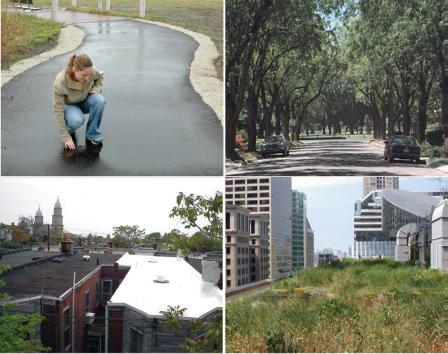Heat Island Cooling Strategies

Información relacionada disponible en español
Many communities are taking action to reduce urban heat islands using five main strategies: 1) increasing tree and vegetative cover, 2) installing green roofs, 3) installing cool—mainly reflective—roofs, 4) using cool pavements (either reflective or permeable), and 5) utilizing smart growth practices. The links below lead to detailed information on each of these strategies and examples of the activities that governments and communities are implementing.
Strategies and Technologies
- Trees and Vegetation - Increasing tree and vegetation cover lowers surface and air temperatures by providing shade and cooling through evapotranspiration. Trees and vegetation can also reduce stormwater runoff and protect against erosion.
- Green Roofs - Growing a vegetative layer (plants, shrubs, grasses, and/or trees) on a rooftop reduces temperatures of the roof surface and the surrounding air and improves stormwater management. Also called “rooftop gardens” or “eco-roofs,” green roofs achieve these benefits by providing shade and removing heat from the air through evapotranspiration.
- Cool Roofs - Installing a cool roof – one made of materials or coatings that significantly reflect sunlight and heat away from a building – reduces roof temperatures, increases the comfort of occupants, and lowers energy demand.
- Cool Pavements - Using paving materials on sidewalks, parking lots, and streets that remain cooler than conventional pavements (by reflecting more solar energy and enhancing water evaporation) not only cools the pavement surface and surrounding air, but can also reduce stormwater runoff and improve nighttime visibility.
- Smart Growth - These practices cover a range of development and conservation strategies that help protect the natural environment and at the same time make our communities more attractive, economically stronger, and more livable.
